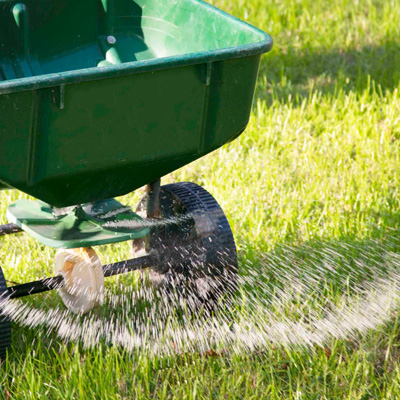Question of the Week – Number Three: January 28, 2021
“Neil. Neil! Neil!!! Is it time to apply pre-emergents yet?”
I’m smiling as I write this. If we get a few days of warm weather, there are folks who are ready to declare that Growing Season 2021 has begun. And one of the first tasks on their minds is to get out the pre-emergent granules before summer weeds start to sprout.

I’m going to explain this in bullets…
To get right to the point, let’s keep this short.
• Pre-emergent granules are used to prevent germination of annual weeds. They are applied just before (“pre”) germination (“emergence”).
• We apply them in late winter/early spring to prevent crabgrass and grassburs. These are not used at this time of year to deal with weeds that are currently visible in your winter lawn. You would apply pre-emergent granules to prevent them way back just before Labor Day.
• Crabgrass and grassburs start to germinate a couple of weeks after the average date of the last killing freeze for any given part of Texas.
• That means that application date needs to be two weeks prior to the date of the average last killing freeze for your city.
• Unless you’re in deep South Texas, you’re still too early. Weeks too early for much of the state.
• I will start notifying you when the proper time is at hand. I’ll do so here in e-gardens, on my Facebook page and on all of my radio programs. I will do so a minimum of 4 times each place. It is also in Chapter 2 of my newest book Neil Sperry’s Lone Star Gardening.
• Products that will do the job for you: Dimension, Halts Weed-EX and Balan.
• You must repeat with a “booster shot” application 90 days later. That’s because Texas has a very long growing season, and these products are only effective for about 100 days. These are safe around trees and shrubs, and they can be used on any type of turfgrass as long as it has been through its first winter.
A fabulous webpage…
That’s how I described this page (below) to my Facebook friends. However, it seemed to throw some of them into a math-phobic dither.
Let me keep it simple:
- Click to the linking page from the National Gardening Association.
2. Enter your Zip Code.
3. Two charts will come up if you’re on a desktop:
Go to the “50%” column.
Scroll down to “Last 32°.”
4. The date that you see there will be the average date of the last killing freeze for your city.
Note: Just to pay lip service to all those other figures on that page, stay on that “Last 32°” line and let your eye move left and right. As you go farther into the future (later dates) you will see the decreasing percentage chance that you will have another 32° night.
Or, if you’re a gambler and you want to plant early, go the other direction. You’ll be able to check the odds that your frost-sensitive plants might still be frozen. This information can be extremely helpful.
